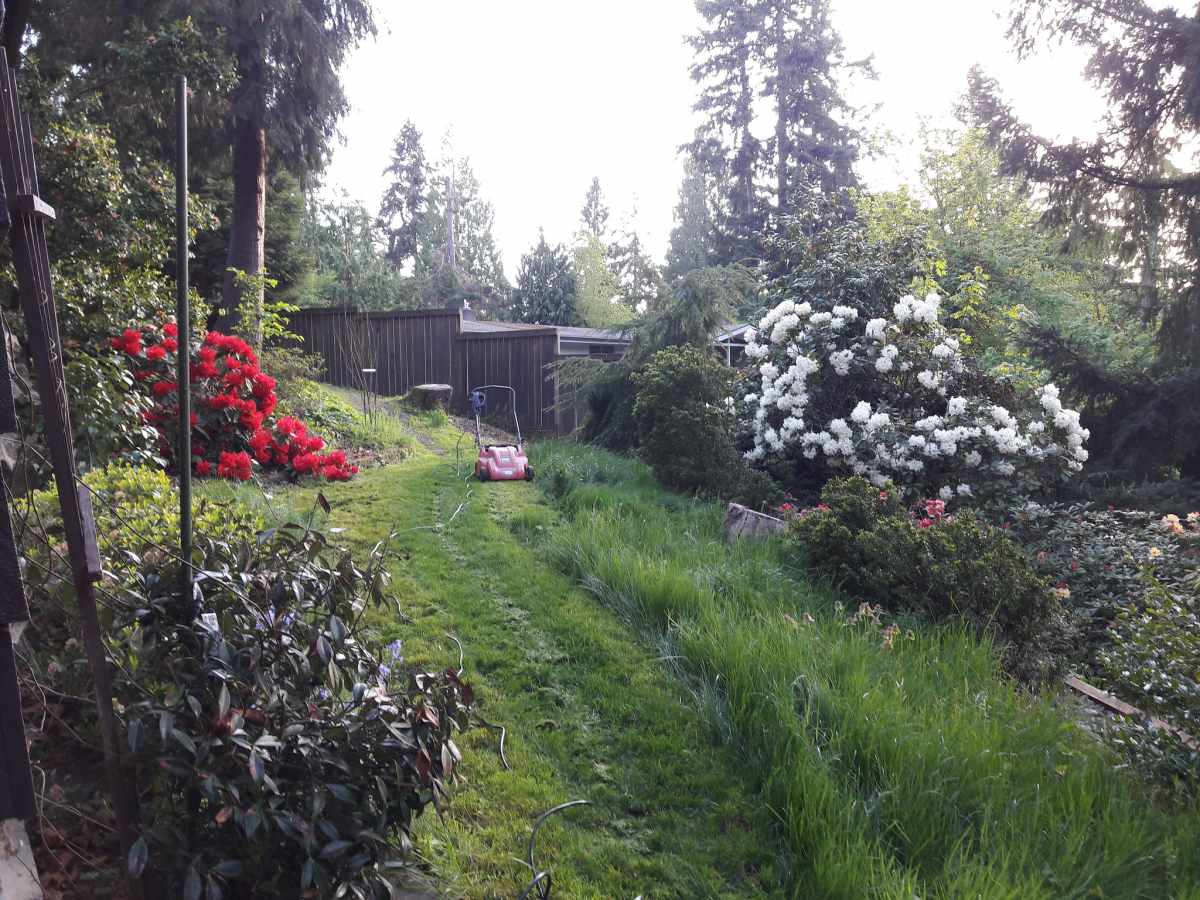
Ever thought, ‘That lawn needs mowing…maybe tomorrow?’ and just like that, it’s a prairie out there. With a trimmer and the right mowing tips, we can tackle it. Let’s figure out how to mow tall grass.
Mowing tall grass requires a bit of strategy. Aim to mow at a higher setting, go at a slow pace, and tackle in stages for the best results. Also, if your yard is really overgrown, you should take a few more steps and precautions.
Rules for Mowing Tall Grass
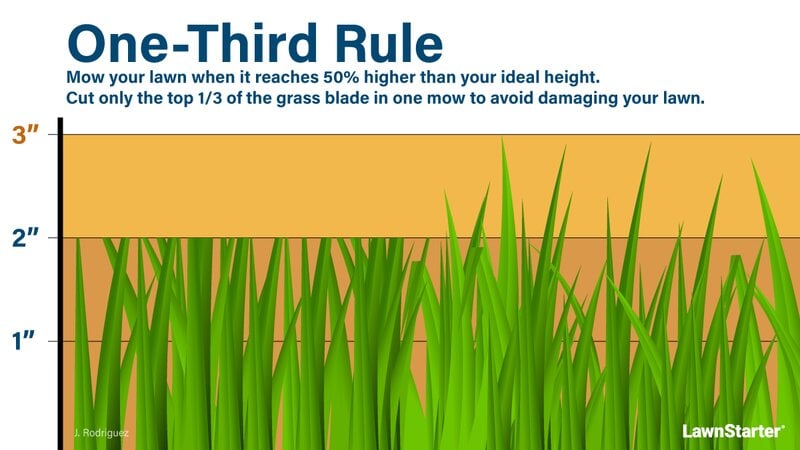
Are you tempted to cut your long, dense lawn in one go? We get it. But, unfortunately, that’s not the best approach. Cutting too much grass at once can cause trouble. Wondering why?
Well, it’s all about keeping your grass and mower happy and healthy. Your poor mower might groan, overheat, or clog up. And you could damage the very grass you’re trying to tidy up. So, the best way to handle this is a gradual approach, especially if your lawn’s already thick at the bottom.
Depending on the grass’s height, this may take between several days to 2 weeks. Stick with it through; your perseverance will surely pay off.
Before you start chopping away, remember the following green thumb rules:
- The One-Third Rule: Trimming more than one-third of the grass blade at a time can shock your grass and may end up dehydrating it. This can lead to brown patches and an overall dull-looking yard.
- Recovery Time: Mowing down tall grass isn’t a one-and-done task. Space out your mowing sessions between 2 to 4 days, each time cutting off another third of the height until you reach your desired lawn level.
There are two scenarios a homeowner may encounter regarding tall grass:
- Mildly Tall Grass: Almost everyone familiar with lawn care has faced this level of overgrowth at least once. When left unattended for a few weeks, the grass on your lawn can reach this mildly tall state. The good news? It’s still manageable and won’t need arduous work to get it back to looking neat again.
If your tall grass is up to 6 inches tall (no taller), a good mower with a sharp blade and a bit of determination in your stride should do the trick. Just make sure to start with your mower’s highest setting and gradually lower it over subsequent mowings.
- Wildly Tall Grass: While most urban homeowners in the US rarely face this level of overgrowth, those in rural areas or places with lots of rain and sun might deal with extreme grass growth.
Wildly tall grass is more of a beast to tackle. With grass reaching ankle or even knee height, it can feel like you’re in a serious battle with nature’s own green giant. Here, you’ll need additional tools, such as a string trimmer, and much more patience.
But let’s see how to cut tall grass step by step.
Step-by-Step Guide for Mowing Tall Grass
Step 1. Gather The Right Tools for the Task
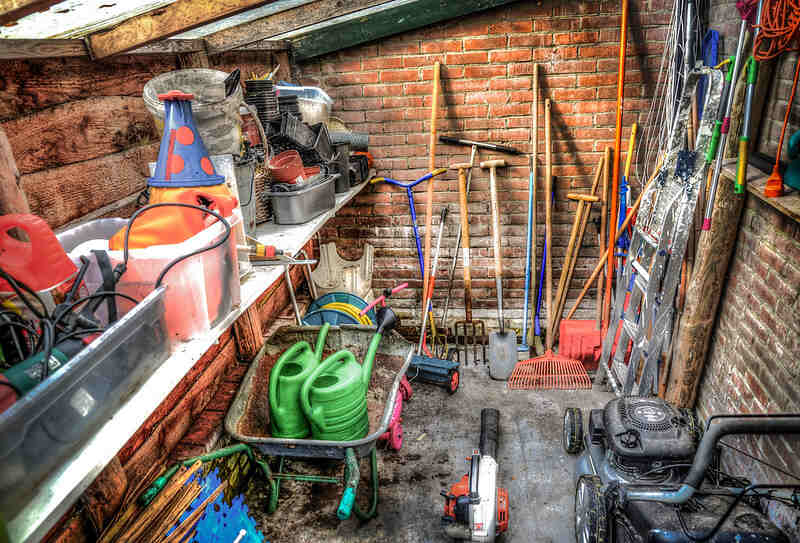
Mowing high grass is more than a regular lawn job. You’ll need extra tools and safety gear. Tall grass can hide surprises like rocks and sticks, and you don’t want those flying at your face.
Here’s what you need on your mowing mission:
- Lawn mower: Sure, it seems obvious, but ensure your lawn mower is up to scratch. If blades are blunt, consider getting them professionally sharpened or replaced. Your mower should have a strong engine and adjustable cut height settings for the best results. Here’s our guide, “How to Sharpen Lawn Mower Blades.”
- Trimmer/Brush Cutter: A line trimmer, also known as a ‘weed eater’ or ‘weed wacker,’ especially cordless versions such as battery-powered ones, can be nimble to ally tall grass stalks before bringing in the lawn mower. If your lawn has thick, wild growth, consider using a brush cutter to get things under control.
A scythe can also be an effective tool for tackling long grass, especially if you’re dealing with smaller areas, but keep in mind that it requires a bit of practice.
- Rake or Leaf Blower: These are ideal for gathering clippings that can be composted or bagged up.
- Protective Gear: Get your goggles on or a face shield, along with ear protection. Slip into long pants, closed-toe shoes, and gloves; no one wants cuts or scratches.
- Other Garden Tools (Optional): Consider using a weed puller or trowel to deal with any weeds lurking within your tall grass.
Step 2. Check the Weather
Mowing isn’t a rain or shine chore. You have to mow on a sunny, dry day, and here’s why:
- Wet Grass Is Slippery: It makes it harder for the mower blades to cut cleanly, often resulting in uneven trims.
- Possibility of Lawn Damage: There’s a chance your mower wheels might slide on wet grass, causing more harm than good.
- Delayed healing: Clippings from wet grass can prevent sunlight from reaching the lower parts of your lawn, slowing down recovery.
So, check the weather forecast to ensure you’re setting out on a clear day with no predicted rain or storms. Even better, if possible, make sure there’s no rain predicted for the next week.
Step 3. Scan Your Lawn For Obstacles

Take a stroll through your tall grass. Check for any obstacles that could potentially damage your mower or be dangerous if they were hit by the speeding blades.
Hiding within the tall grass could be anything from fallen sticks, dog toys and bones, large rocks, and even kids’ playthings, objects that are hard for you to spot but great at causing problems during mowing.
Heads Up: There might be some critters hiding in the tall grass (for example, voles), so give them a chance to find new shelter before you start mowing. Also, be sure to check for any anthills or underground nests.
Step 4. Start High: Trimming Overgrown Grass
Knee-high grass isn’t an ideal starting point for a mower, so step up with a trimmer or brush cutter first. This will lop off the top section of your lawn, making it easier to tackle what’s left later through mowing.
Here’s how:
- Begin at one end of your yard and slowly walk to the other hand, cutting tall blades down to about half their height.
- Move in a slow, steady, side-to-side motion, overlapping each pass to prevent strips of untouched grass.
- Gather the clippings after first trimming down to help avoid suffocating your lawn, and it also deprives any hiding pests of their shelter.
- Don’t rush into the next cut on your list. Let the lawn enjoy a little recovery session – two or four days should do the trick.
- Repeat the trimming process until the grass is around 6 inches tall, waiting a few days in between each cut.
*Note: In special cases of severely long grass, you need to break the ‘never remove more than one third’ rule and initially cut up to half its length. Afterward, when your grass is at a manageable mowing height, shift back to the usual ‘cut one-third’ routine for lawn recovery and maintenance.
Step 5. Weed It Out: Getting Ready For Mowing
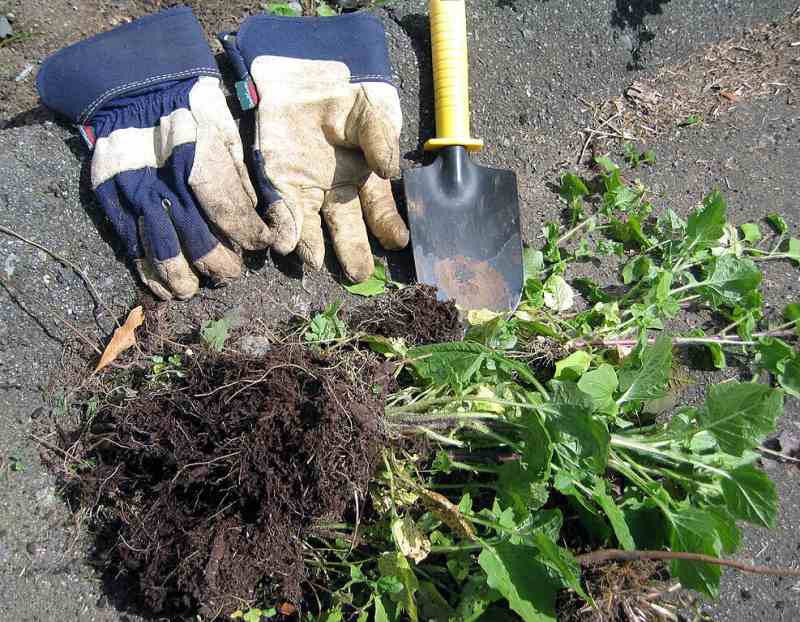
If you think trimming is all for mowing tall grass, you’re in for a surprise. When left unattended for long periods, your lawn, in addition to growing frighteningly tall grass, also creates an ideal climate for weeds.
Here’s the approach we recommend to prep your landscape before hitting it with the mower:
- Identify The Weeds: Look closely to recognize the common intruders, such as crabgrass, dandelions, or thistles in your lawn.
- Pull Or Dig Out Weeds: Equip yourself with gloves and manual tools like a weed puller or trowel to dig out, especially the uproot, which is vital for weed survival.
- Spot-Treat With Herbicide (Optional): For larger patches of weed, apply a targeted herbicide directly on the weeds.
- Allow Time For The Herbicide To Work: Give it a few days so that the solution is properly absorbed by the targeted weed for better results.
- Rake Away Debris: Once they’ve wilted away post-herbicide treatment, rake off the dead weeds. Clearing this debris prepares your turf for a smooth mowing session.
Step 6. Mow It Down

Now that your long grass has been tamed a fair bit, the weeds have been dealt with, and you’ve waited 2 to 4 days, it’s finally time to bring out the lawnmower.
Starting out, adjust your mower’s deck height to the correct level; that way, you ensure there’ll be no more than one-third of the grass blade height getting shaved during this mowing run.
So, for instance, if your cut grass is now standing tall at 6 inches (as recommended in the previous step), set the deck to 4 inches high. This will remove 2 inches, which is just about the right amount, one-third of the current height.
Pro tips:
- Using an orderly pattern (think back-and-forth or in spirals), run the mower over your entire yard.
- Gradually decrease the cutting height with each subsequent mow every few days until you reach an ideal level of three to four inches for cool-season grasses like fescue and bluegrass or about one to two inches for warm-season varieties.
- Overlap your rows a bit, as you did while trimming. This ensures an even cut and covers any spaces you might have missed in the previous pass.
- Leave the clippings where they fall. As long as they’re small (about one inch or smaller), they can decompose quickly, nourishing your soil with natural fertilizers and nutrients.
- Water your lawn properly after mowing. This will help keep the grass hydrated and healthy, promoting new growth.
- Wait for a few days between every mow. This is to give your grass some recovery time.
*Note: The entire process might take about a week or two with repeated cuttings depending on how tall the initial overgrowth was, but be patient. Your garden hasn’t turned into a meadow overnight and cannot be recovered in a single afternoon.
Step 7. Edge and Tidy Up (Optional)
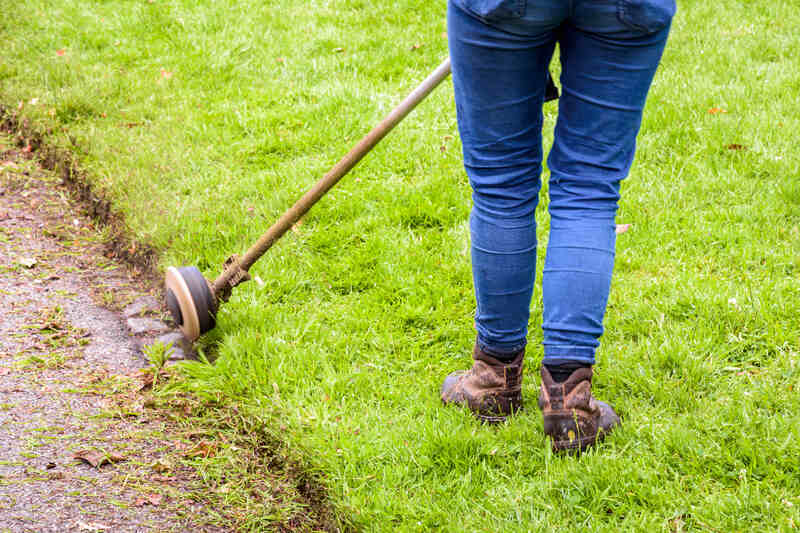
Edging is like dotting an ‘i’ – a finishing touch that elevates your lawn from merely presentable to perfection. It’s simple: use an edger tool or a string trimmer (held vertically) and cleanly carve out the boundaries by cutting excess growth leading onto paths or flowerbeds. Leave no blade untrimmed.
Need help to achieve the perfect finish on your lawn’s edge? Check out these articles:
Next, use a leaf blower to tidy up any remaining grass clippings or debris left behind from the mowing process.
Lawn Care Tips for After Mowing
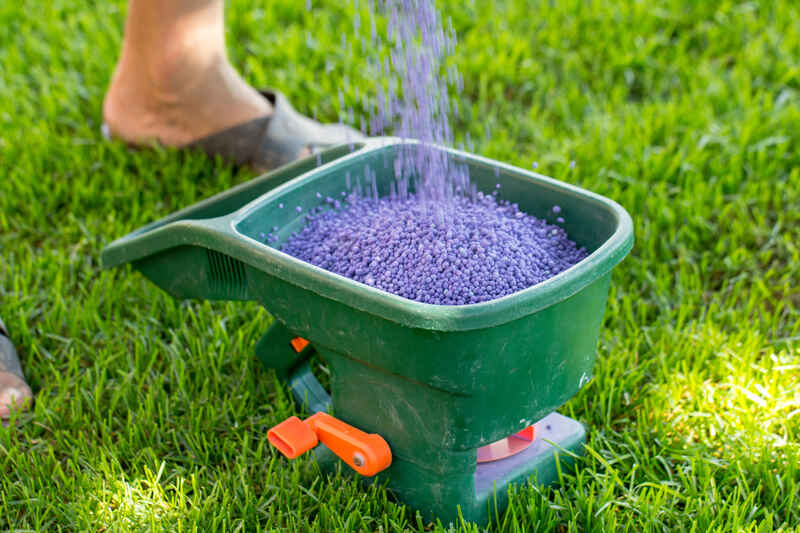
Now that you’ve managed to handle your tall grass don’t let it become overgrown again. Switch gears from rescue mode to maintenance mode and keep things in check.
First of all, don’t forget to mow regularly. Other maintenance tasks to keep your lawn looking its best include, but are not limited to:
- Watering: It’s important to water your lawn well after cutting tall grass. This helps it recover and grow back quickly. Then, water it 1 to 1.5 inches per week in two or three sessions. Need more tips on watering your lawn? Here is our guide: “How Often Should I Water My Lawn?”
- Fertilizing: Boost new growth with a high-nitrogen fertilizer. After tackling tall grass, fertilization supports strong leaf growth from the roots below ground level. Always refer to product guidelines for optimal utilization and scheduling. (Here is our guide: “How to Fertilize Your Lawn”)
- Overseeding: A lawn recovering from a heavy trim may have thinned out areas. Overseed any patchy spots to encourage denser growth. Early fall is ideal for overseeding cool-season grasses, while spring works for warm-season varieties. Looking to learn the best way to overseed your yard? Check out this easy guide on lawn overseeding.
Just stepped into homeownership and clueless about lawn care? Check out our straightforward, easy-to-follow, step-by-step guide titled “Lawn Care for Beginners.”
The Best Mowing Height For Your Grass Type
As a rule of thumb, it is best not to allow your grass to grow more than three to four inches tall. This might require mowing once or twice a week during the growing season and less often during dormant periods.
However, mowing a lawn the right way can be tricky, as it depends on several factors, including:
- Type of grass;
- The time of year;
- Local climate conditions;
- Watering and fertilizing frequency
- The level of traffic your lawn receives.
Warm-Season Grass
Warm-season grasses are known for their resilience in high heat and aridity. They do well with sunlight, regular watering, and a proper mowing routine.
To avoid damage to your lawn, here are the most suitable heights for warm-season grass types:
| Grass Type | Suggested Height (inches) | Mow at This Height (inches) |
| Bahiagrass | 3.0 to 4.0 | 4.0 to 5.25 |
| Bermudagrass | 1.0 to 2.0 | 1.25 to 2.5 |
| Buffalograss | 2.0 to 4.0 | 2.5 to 5.25 |
| Carpetgrass | 1.0 to 2.0 | 1.25 to 2.5 |
| Centipedegrass | 1.5 to 2.0 | 2.0 to 2.5 |
| St. Augustinegrass | 2.5 to 4.0 | 3.25 to 5.25 |
| Zoysiagrass | 1.0 to 2.5 | 1.25 to 3.25 |
Cool-Season Grass
Cool-season grasses are known to perform well during cooler months of spring and fall. Their optimal mowing heights tend to be slightly higher than their warm-season counterparts.
Check the table below for an indication of how high you should mow your cool-season grass varieties:
| Grass type | Ideal lawn height (inches) | Mow when the grass reaches this height (inches) |
| Tall fescue | 2 to 4 | 2.5 to 5.25 |
| Perennial ryegrass | 2 to 3 | 2.5 to 4 |
| Kentucky bluegrass | 2 to 3 | 2.5 to 4 |
| Fine fescue | 1.5 to 3 | 2 to 4 |
FAQ About Overgrown Lawn
Is it OK to mow tall grass?
Yes, it’s okay and even necessary to mow tall grass. But remember, when dealing with overgrown greenery, you need to trim gradually and give the vegetation recovery time between sessions.
Is it bad to cut long grass short?
Mowing long grass too short can shock it and cause dehydration. This leads to damage, such as brown patches or a dull-looking yard. To keep your lawn healthy, only remove up to a third of the height and space out your mowings by a few days.
What’s the ideal time of day for lawn mowing?
Mid-morning or late afternoon are generally the most recommended times of the day. However, the best time to mow your lawn is when the grass is dry, and the sun isn’t at its peak. This prevents the cut grass from drying out too quickly and damaging your lawn.
Call In the Pros
Cracking the code to mow tall grass is about going step by step. Armed with the right tools, good weather, and protective gear, you’re ready for action. Don’t rush things; cutting more than a third of your grass’s height can weaken it. Take breaks between mowing sessions to let your lawn recover.
For extra tall grass, use a trimmer or brush cutter first to make life easier before bringing out the mower. If time is tight or this task seems a bit overwhelming, don’t hesitate to call in a local pro.
Main Photo Credit: Wonderlane / Flickr / CC0 1.0